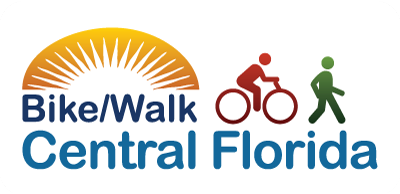 Jarvis Wheeler, 28, is the community school director in charge of social services at Evans Community School. Once a teacher and student at Evans, Jarvis now supports the safety of the 2,600-member student body – especially when it comes to walking safely. Wheeler does not have to look at the crash data to know that students and walkers are having a tough time with the traffic by the school and throughout the community.
Jarvis Wheeler, 28, is the community school director in charge of social services at Evans Community School. Once a teacher and student at Evans, Jarvis now supports the safety of the 2,600-member student body – especially when it comes to walking safely. Wheeler does not have to look at the crash data to know that students and walkers are having a tough time with the traffic by the school and throughout the community.
What would you like to see done to make the area safer for students?
I would want to see a safe zone. Being the director of social services and community engagement here at Evans, I don’t believe in just policing an area. If you have too much law enforcement, then people feel trapped or feel like they are animals or feel like their space isn’t respected. So I believe in a collaborative effort among community members, among stakeholders, among law enforcement. After school at Evans, students know they can get home safe and there’s a myriad of support systems and personnel who are ensuring they get home safe. A lot of times, in other areas, students don’t have to worry about that. But we are located at a main intersection. We do have negative influences sometimes outside the perimeter of our campus. So it is important for our students to get home safe and be safe, whether they are here on the school campus or arriving at the school campus.
How could you make it easier for students to leave Evans and cross Silver Star Road?
We have been talking with the county about creating pedestrian walkways, areas on the street that are not necessarily at the intersection where individuals can cross the road. Also, put in wider medians and medians that have more of an aesthetic feeling that research has shown will slow down drivers and also give the individuals who are walking and biking more access to cross when they need to cross, compared to being inconvenienced.
Any timetable?
Right now, a lot of studies are going on.
NOTE: Orange County is currently in the process of studying the Pine Hills Road corridor. More information available here.
Evans sits at the intersection of Pine Hills Road and Silver Star Road, an intersection that made the “Top 5” list for the most car-walker collisions in Orange County. Tell us more about the walking situation in Pine Hills.
We do a lot of walking in Pine Hills. Transportation often is a big barrier for the community. A lot of constituents either walk or take public transportation, which involves some form of walking to get to the bus stop and back. A majority of our students walk. They don’t have cars or their parents work and they can’t always be picked up. A lot of students walk by default.
Note: Pine Hills residents ride public transit more and have fewer cars per household compared to the rest of Orange County according to the American Community Survey.
11 percent of commuters ages 16 and up ride public transit in Pine Hills on average – compared to 3 percent for Orange County and 2 percent for the state of Florida. 16 percent of Pine Hills residents live in a household without a car – compared to 3 percent for Orange County and 7 percent for Florida.
How has the traffic impacted your students?
We’ve had in my time at least three or four students who have been hit by cars. It’s not just the Silver Star corridor. There’s a need for education. I’ve seen students crossing the street wherever and whenever they want and I’ve also seen drivers who don’t yield for pedestrians. That’s just not a formula for safety.
NOTE: Wheeler is right about this not just being an issue in the Silver Star corridor. As you may know, Smart Growth America named the entire Orlando metro area including Orange, Osceola and Seminole Counties as the most dangerous metro area for walking in 2014.
Do you see a lot of speeding on Silver Star, even when school is in session?
Yes. I worked with the county to get radar signs put up in our school zone. We also did another safety initiative where we had community members and stakeholders who assist after school with dismissal since high schoolers don’t have crossing guards. We just got some community members who can come out and assist. That’s definitely aided with the education and awareness centered around the students.
Living in Pine Hills, do you walk much in the community?
No. I mostly drive.
That kind of points to the problem facing people who walk, doesn’t it?
Not really. For me, it’s just because I have a car. A car is definitely more convenient. If I didn’t have a car, I would walk. Our students walk every day. I feel safe walking in Pine Hills with my students, doing different initiatives. There have been times I haven’t felt safe in high-income areas, maybe because there are dogs everywhere, maybe because everything looks the same, maybe because there are brick roads and that’s not something I’m used to seeing every day. In that regard, being in Pine Hills, it’s just culture. You adapt to the culture you grew up in.

